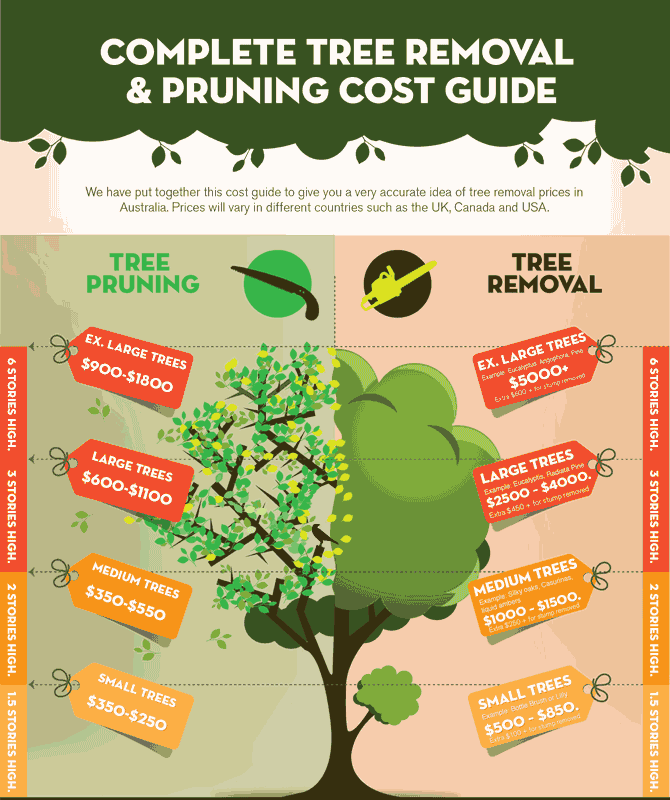Tree Preservation: Indicators That Indicate The Demand For Removal
Tree Preservation: Indicators That Indicate The Demand For Removal
Blog Article
Article Developed By-Lindgaard Levy
If you've ever questioned the destiny of the trees on your property, understanding when it's time for elimination is crucial. However how do you figure out if a tree can be saved or if removal is the only alternative? By seeking particular indications and evaluating safety and security dangers, you can make educated decisions that profit both your landscape and your surroundings. Allow's explore the essential aspects that come into play when determining the fate of a tree and how you can make sure the very best result for your eco-friendly friends.
Signs of Tree Decrease
If you see any one of the complying with indications of tree decrease in your yard, it may be time to consider tree elimination.
One typical indication is dead or worn out branches, which can indicate underlying issues impacting the tree's health and wellness. Keep an eye out for stained or wilted fallen leaves that linger despite correct treatment, as this could be a sign of condition or parasites.
An additional warning signal is excessive leaning or a visible shift in the tree's base, which might recommend root concerns or structural instability. Keep an eye out for fungal growth on the trunk or roots, as this can indicate rot and jeopardize the tree's stability.
Additionally, if you observe big splits in the trunk or major limbs, it's important to attend to these concerns quickly to avoid prospective risks. Dealing with these indicators of tree decline quickly can aid keep the safety and security and aesthetic appeals of your yard atmosphere.
Safety Concerns
To guarantee the well-being of your building and those around you, focusing on security problems related to trees is paramount. Trees can posture numerous security threats if not properly preserved. Dead or rotting branches may fall suddenly, jeopardizing people or harmful frameworks.
Leaning trees can likewise be unsafe, specifically if they're leaning in the direction of a structure or high-voltage line. Additionally, trees with extensive root systems near structures or below ground utilities can cause considerable damage in time.
It's important to regularly examine your trees for any signs of prospective danger. Watch out for cracks in the trunk, big tooth cavities, or indicators of illness and decay. If you discover any one of these problems, it's finest to seek advice from a professional arborist to evaluate the circumstance and determine the required strategy.
Taking https://www.sfchronicle.com/business/article/PG-E-tells-judge-it-s-improving-tree-trimming-14410747.php to attend to safety worries without delay can prevent mishaps and residential property damages in the future. Bear in mind, the safety and security of your building and those around you should constantly be the top concern when it comes to tree upkeep.
Consulting an Arborist
When taking into consideration the health and wellness of your trees, getting in touch with an arborist is a critical action. Arborists are educated specialists that focus on the care and maintenance of trees. They can examine the total health of your trees, recognize any kind of concerns such as diseases or architectural problems, and give skilled recommendations on the best strategy.
By seeking advice from an arborist, you can obtain important understandings right into the problem of your trees and establish whether elimination is essential. Arborists have the understanding and experience to review the risks associated with maintaining a tree versus removing it. They can also supply assistance on alternate options, such as trimming, cabling, or supporting, to assist maintain the tree whenever feasible.
Additionally, arborists can aid you browse any type of local regulations or permits that might be required for tree removal. just click the next article can make certain that the procedure is accomplished safely and in compliance with any applicable laws.
Verdict
In conclusion, when determining whether trees can be conserved or if elimination is necessary, it is essential to take into consideration signs of decline and safety concerns. Consulting an arborist for a thorough assessment is necessary in making the very best choice for the tree's health and wellness and possible hazards. Bear in mind, positive care and timely action can assist protect trees and prevent crashes.
